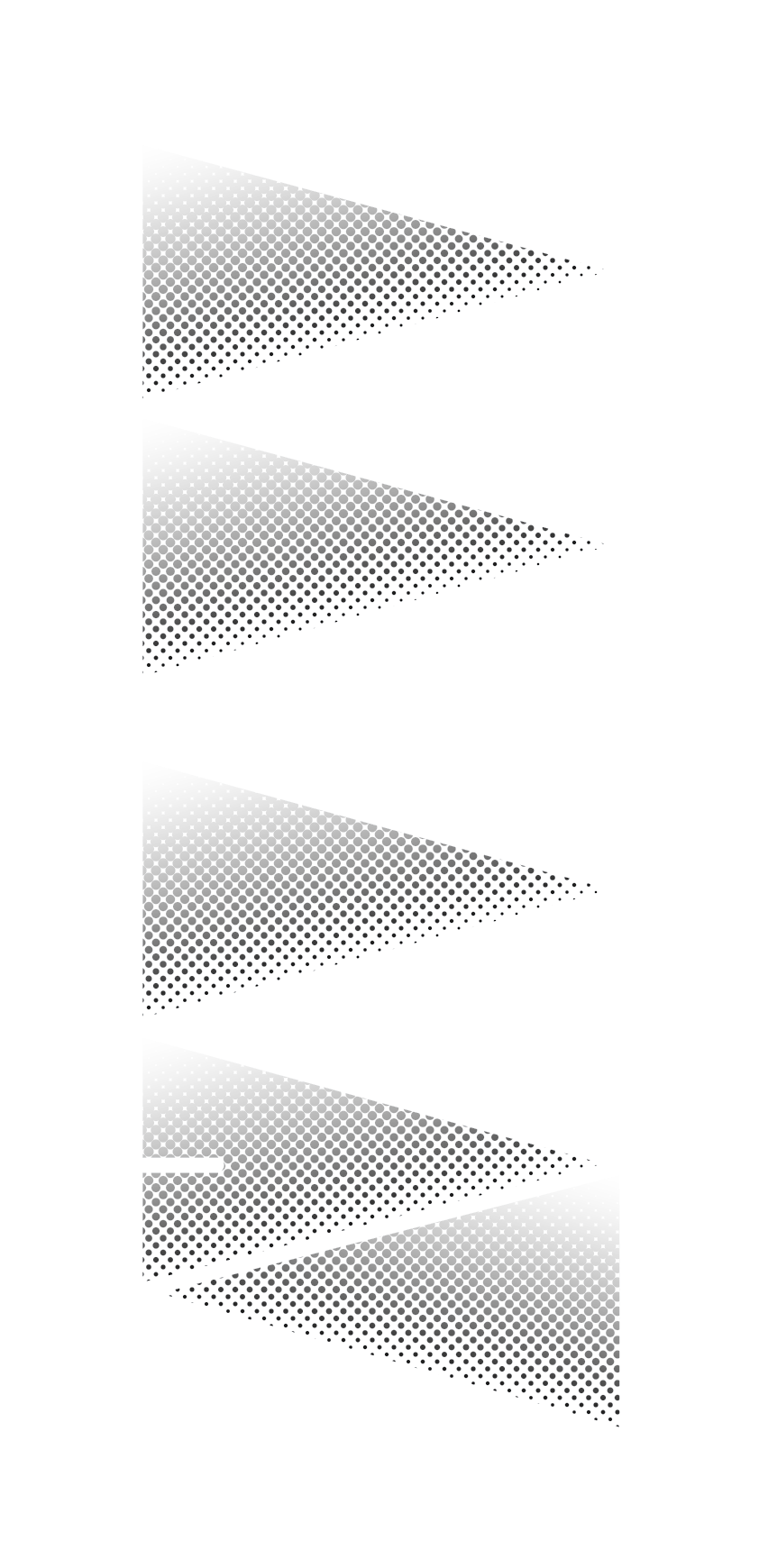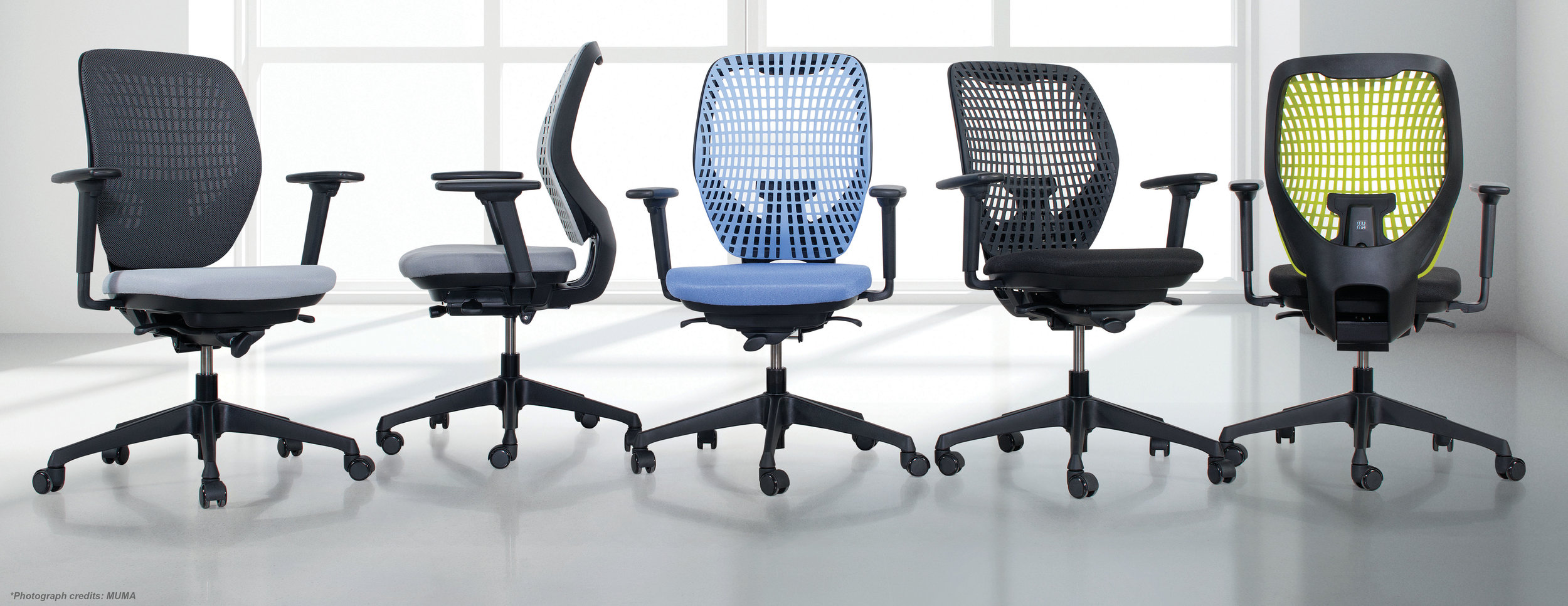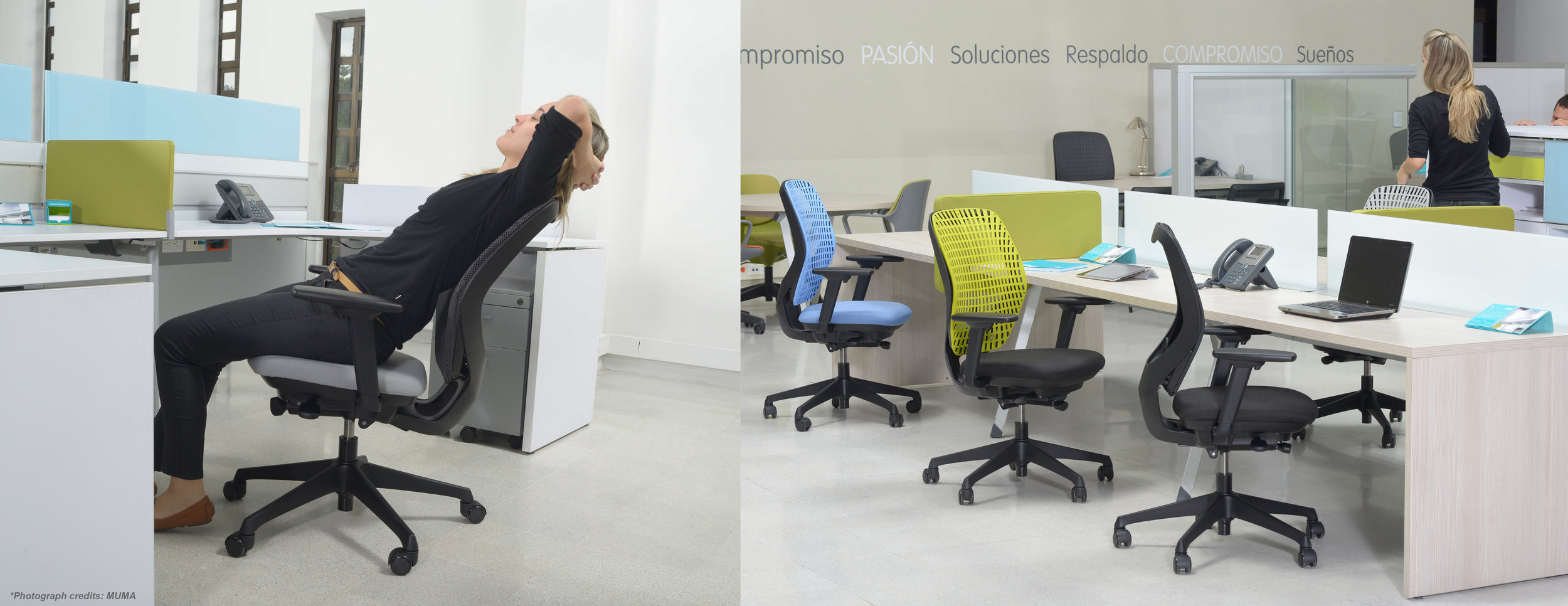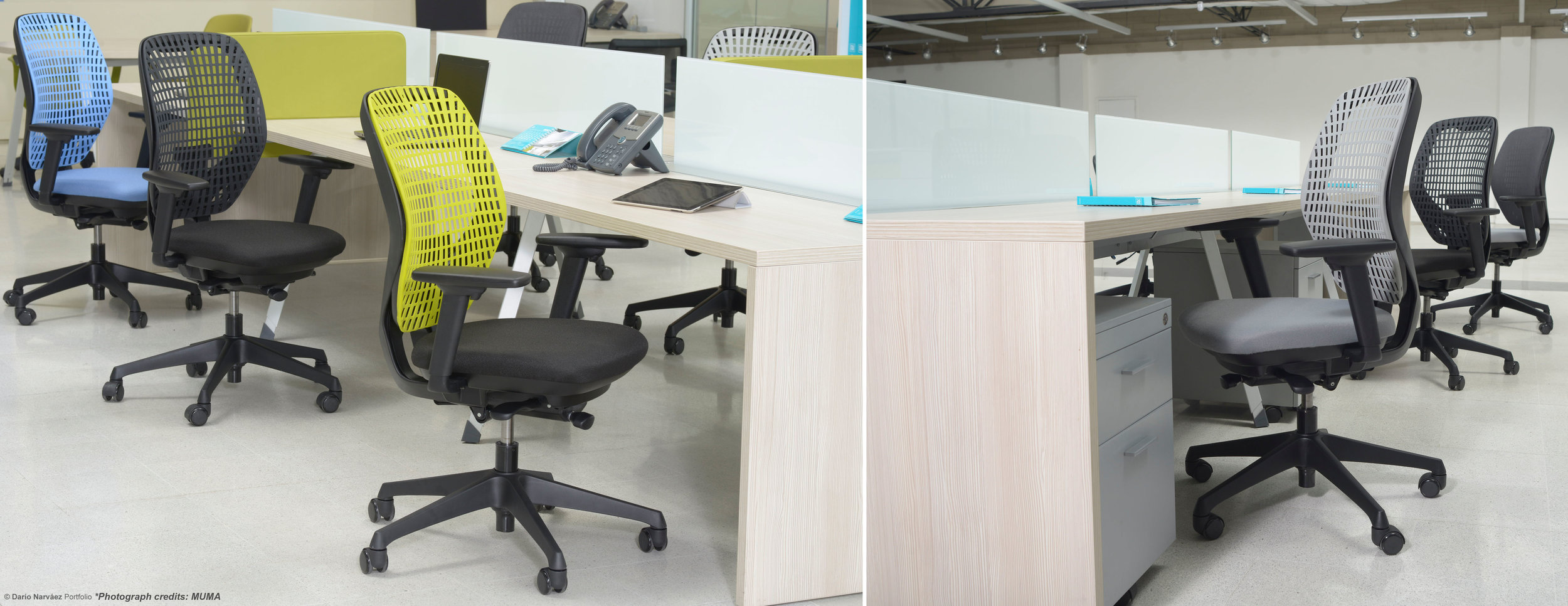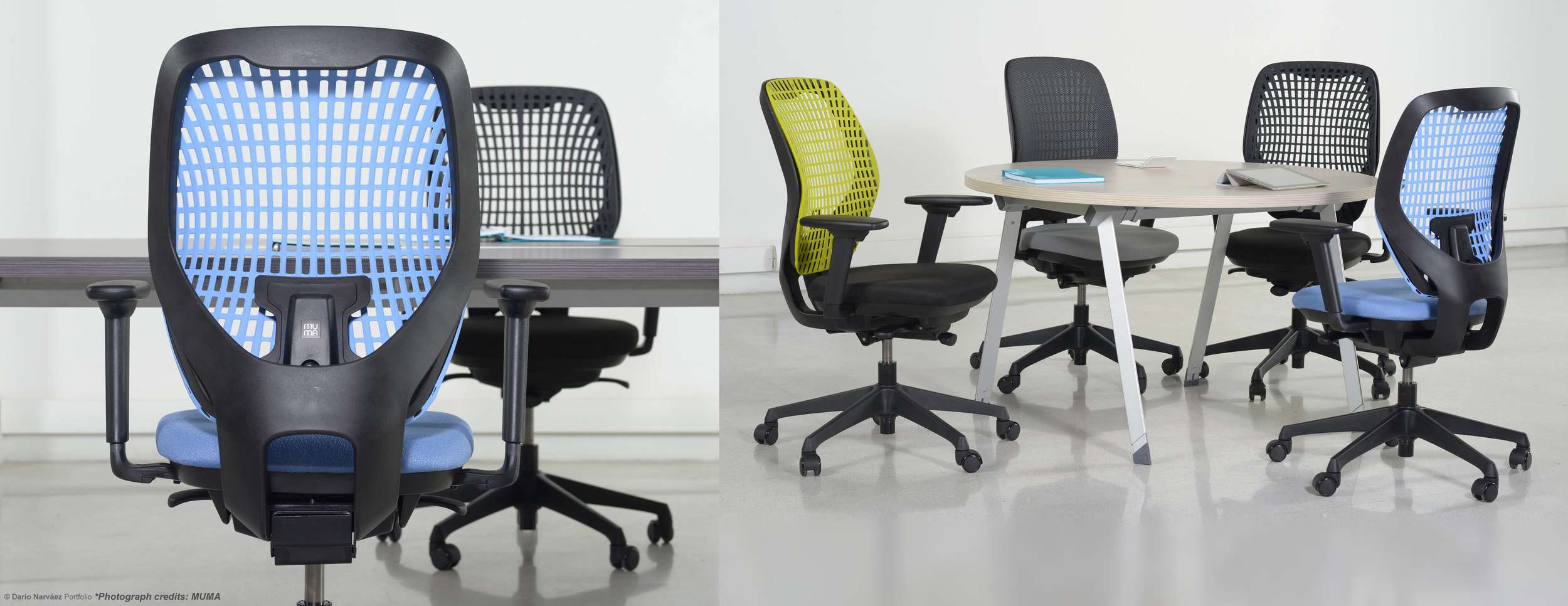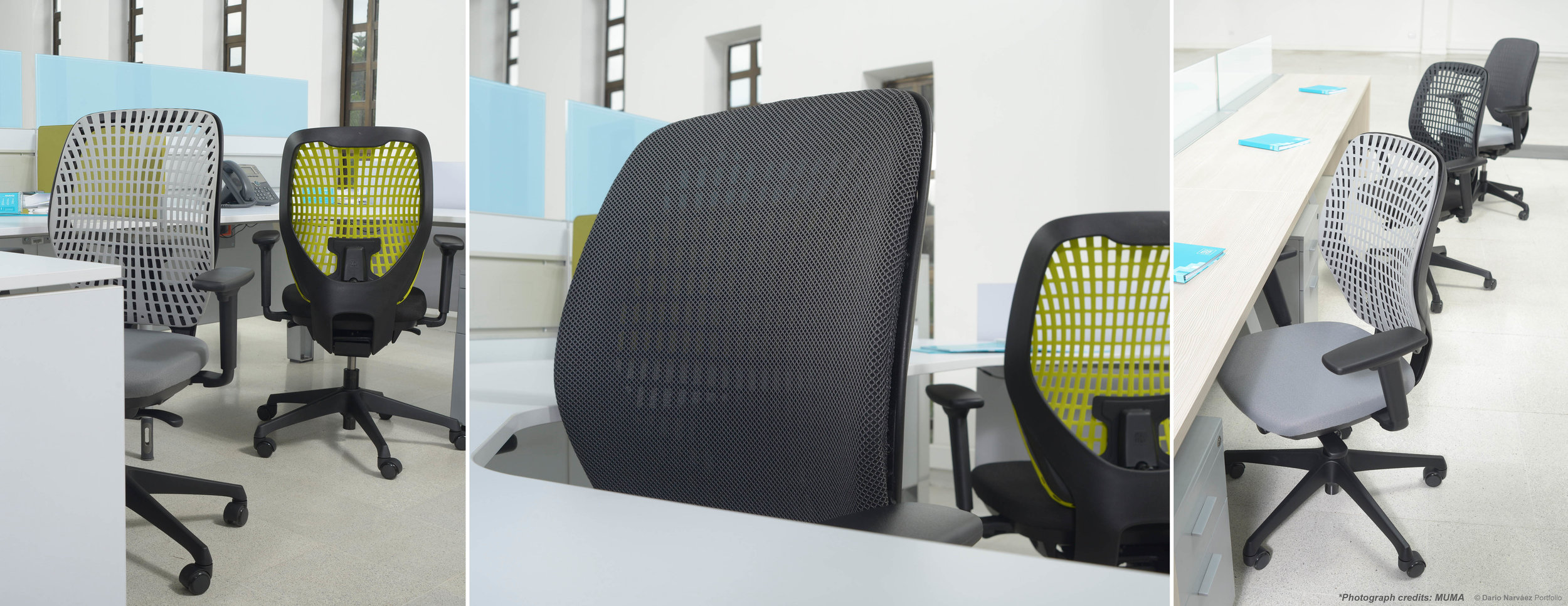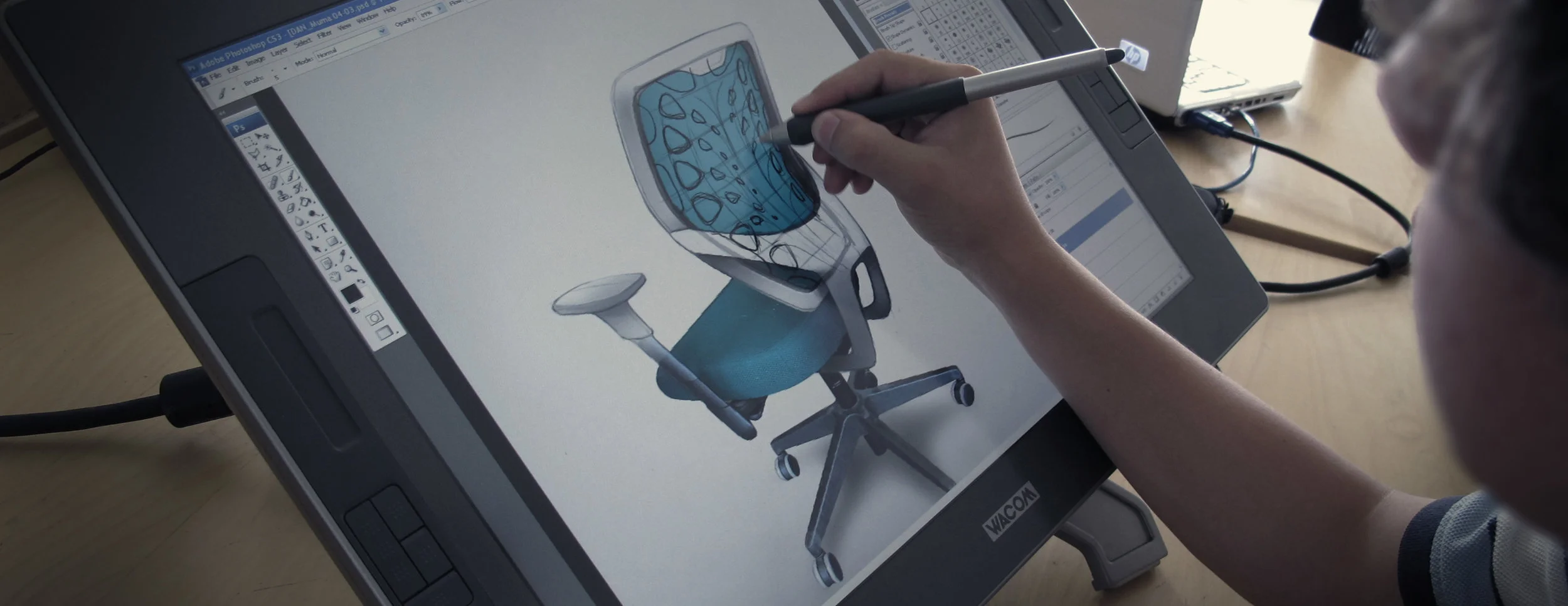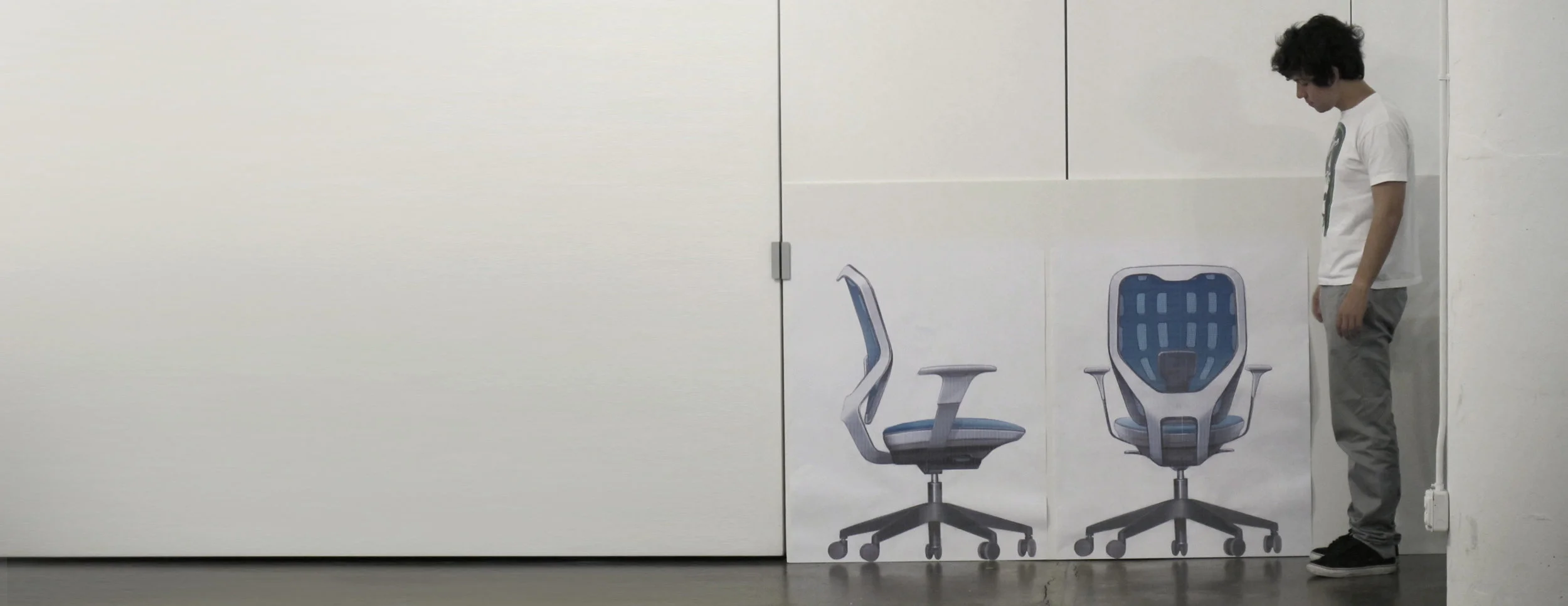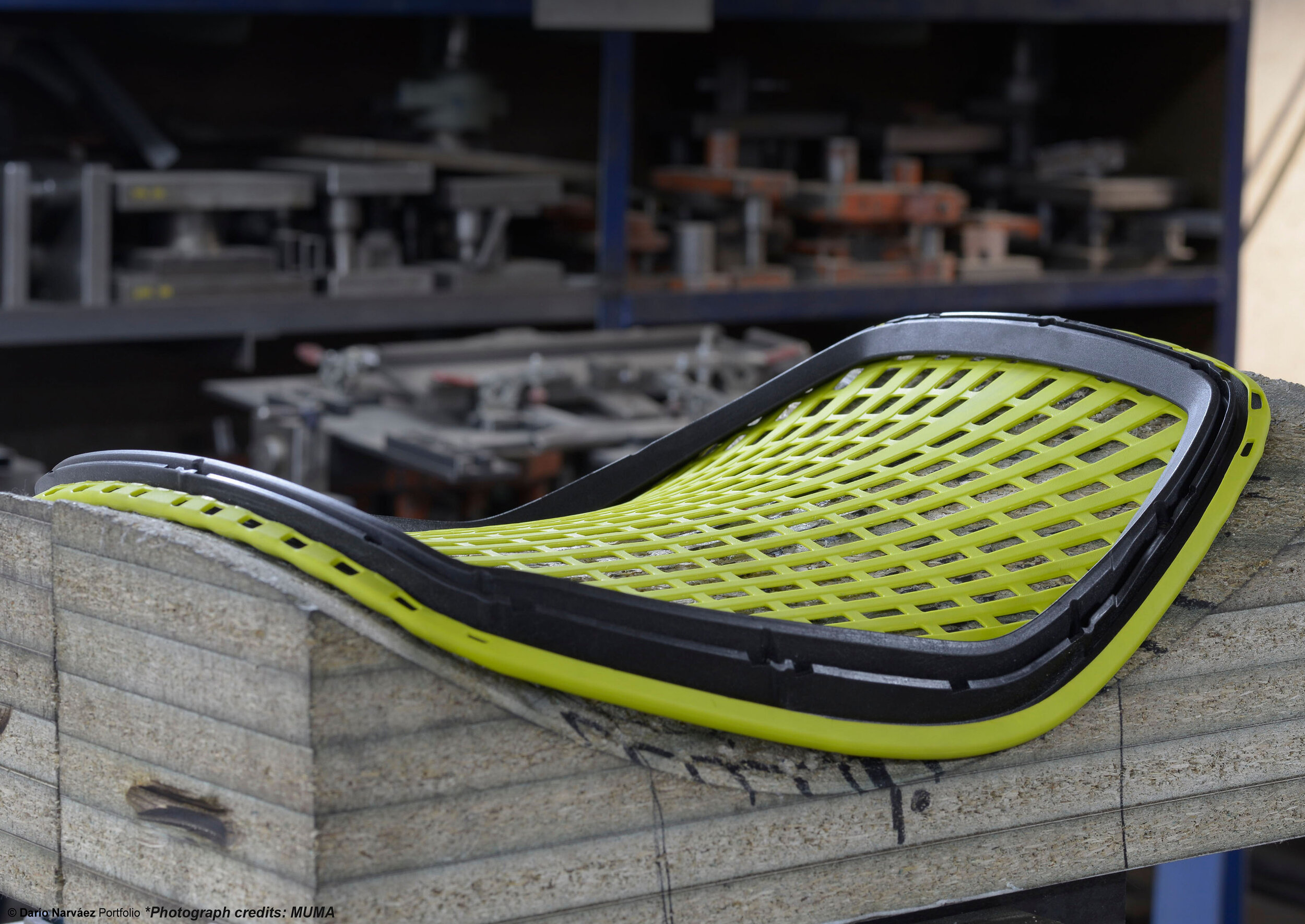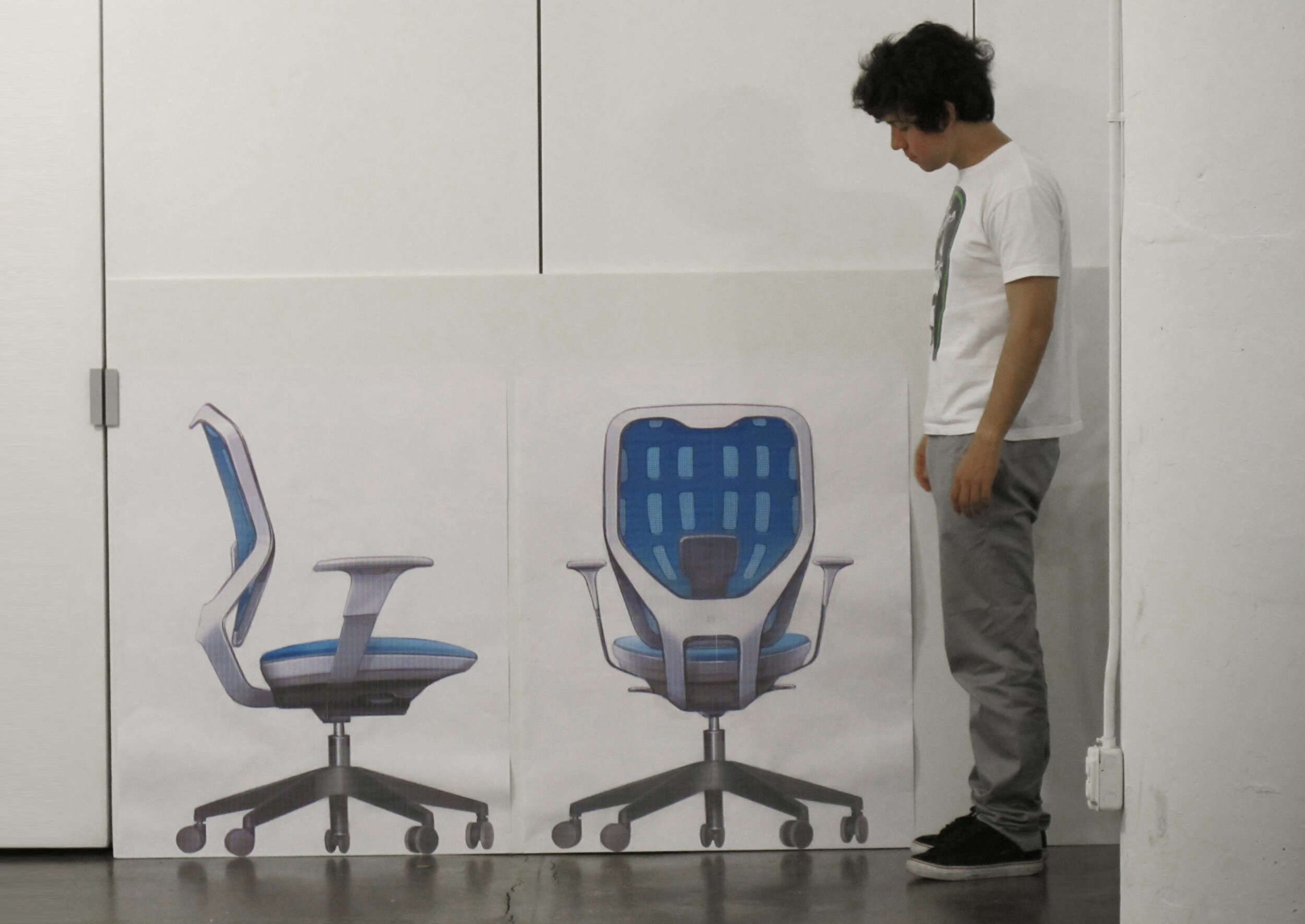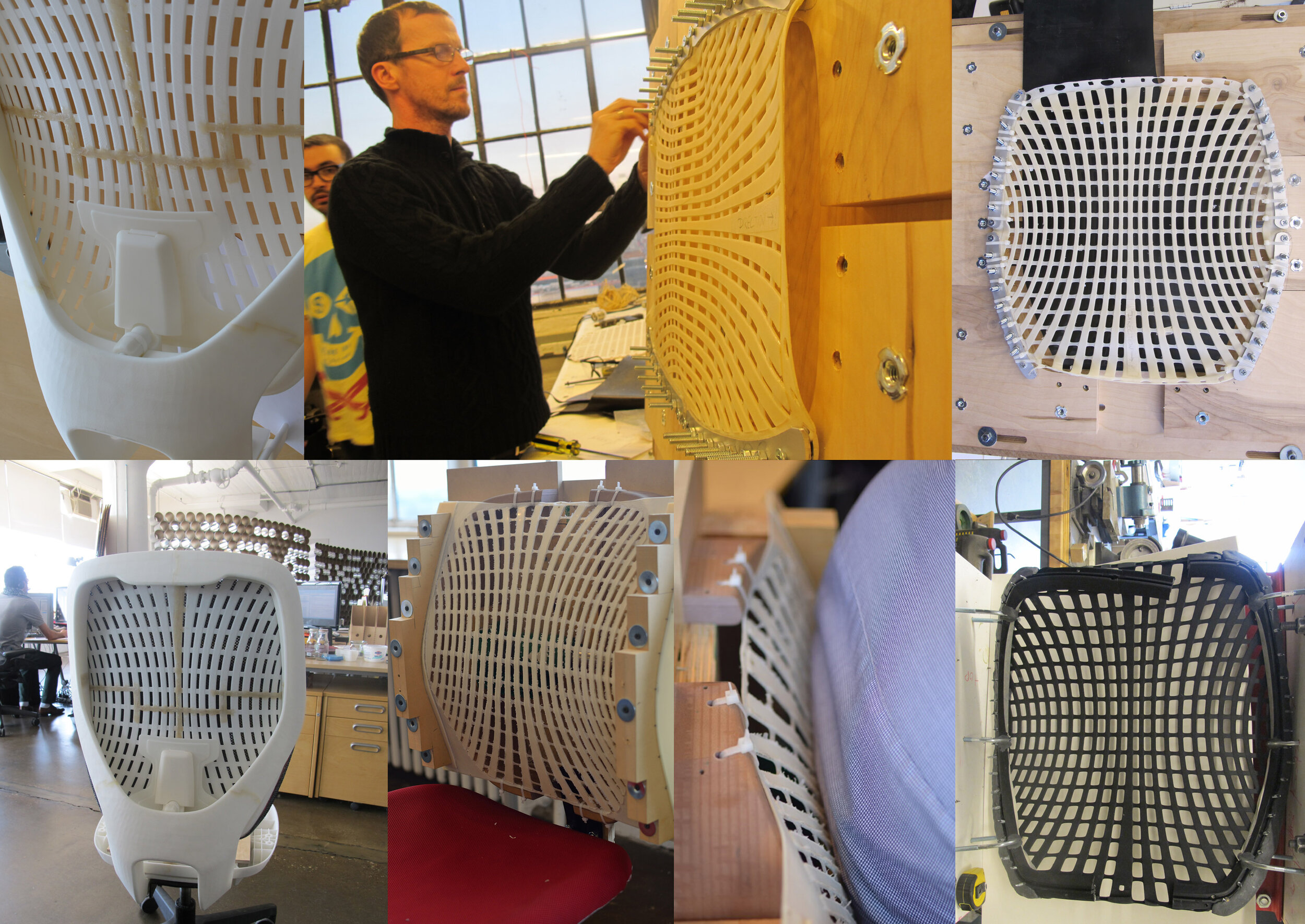Inclusive Ergonomics
Client: MUMA (Colombia) / Project developed with the Curve ID Design Team
MUMA, a company well known in South-America as a pioneer in the improvement of the office environment, asked to design a distinctive, affordable task chair that would capture MUMA’s 63 years of experience in one iconic product.
We were challenged to create the first ‘100% chair’ designed for the Latin Market. Our goal was to deliver the highest ergonomic performance for the most reasonable price, offering high comfort at a competitive price to emerging national and international markets.
Every element of the chair has been developed to enhance the ‘In-gonomics’ concept (Inclusive ergonomic design for everyone). Using fluid curves the innovative back rest suspension pattern works in harmony with advanced materials; fusing clean aesthetics and smart engineering into an affordable and highly ergonomic product.
The backrest integrates a lumbar and sacro-support adjustable in height and depth which adapts to the user’s needs, favoring a good posture of the pelvic zone – principle of a healthy posture in the workplace.
The Ingo Chair offers a diverse range of options and colors, providing buyers with a wide selection to suit their preferences. It includes variations such as the exposed skeleton design, which showcases the chair's structural elements for a modern aesthetic. Additionally, the chair is available with an extra cushion cover, offering added comfort and versatility.
